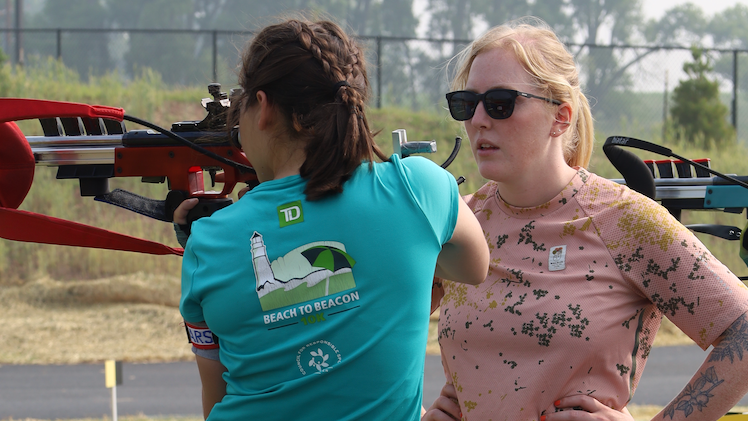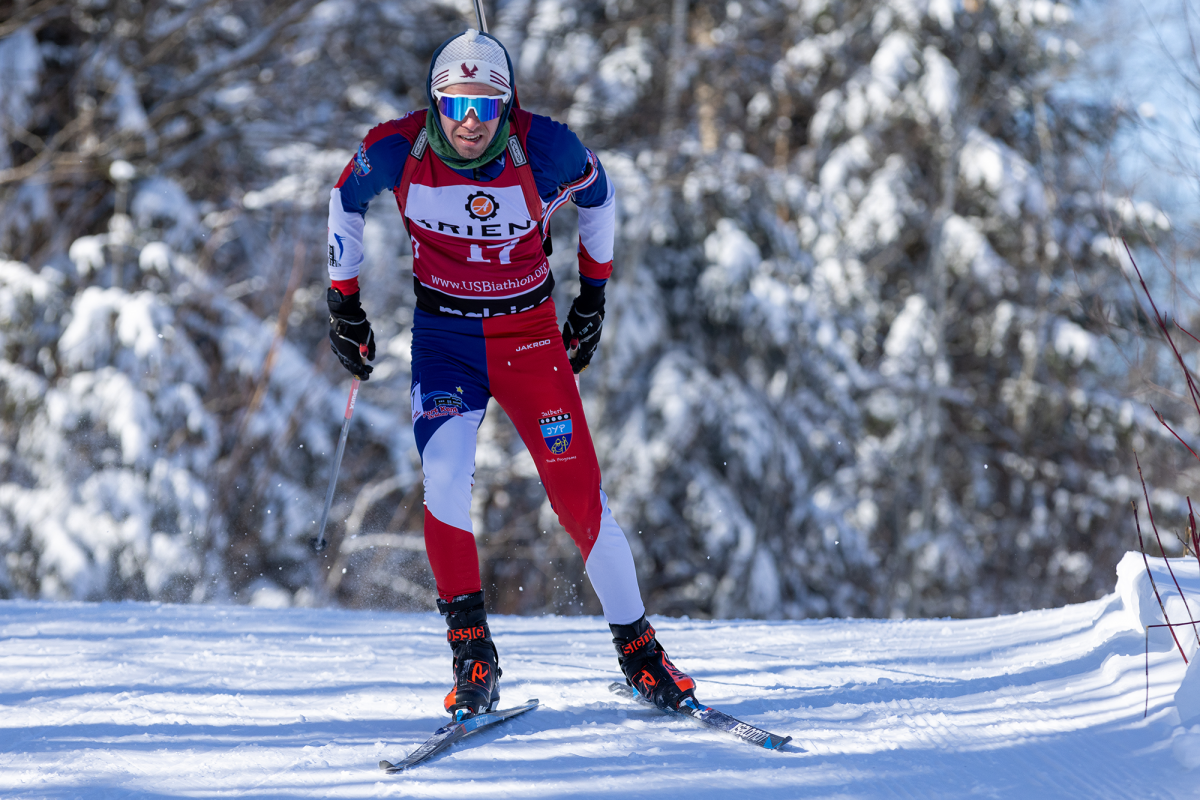
RUHPOLDING, Germany – At the Chiemgau Arena on Monday, the U.S. biathlon team was surrounded by something it doesn’t always experience in training: a cacophony of shots that didn’t belong to them.
With the German women’s team, the Ukrainian national team, and juniors from France and Germany on the range, as well as a group of German men doing a non-shooting sprint workout, training was quite a bit busier than your typical biathlon practice in America – and actually had more attendees than many domestic races.
Despite all that, it is actually a quieter experience than the same camp last year.
“Last year the Italians were here, and the Estonians as well, which is always neat, but there’s just nobody here this year,” said World Cup racer Sara Studebaker. “I do know that Andrea Henkel [of Germany] is going to join us for this coming week, but we’ve pretty much been on our own. It would have been nice if there were other teams here.”
And actually, said shooting coach Armin Auchentaller, that was the plan. It just didn’t work out.

“Last year it was much more busy on the range and we had an international competition with the other teams, which this year was not possible,” he explained as the other coaches watched the last few Americans finish their rounds. “Initially we wanted to take these athletes to the German championships, but they got postponed when we had already planned this trip. So this year we did the time trial just between us.”
Still, both athlete and coach agreed: the atmosphere here is a lot different than in the U.S., and that’s one of the main reasons to come over here.
“Lake Placid is a great place to train, but you can’t compare it to having a World Cup venue with a roller loop on it,” Studebaker laughed. “You can rollerski on the trails that you race on in the winter, and just do the same stuff, pretty much… to be able to have that, it just feels a lot more similar to winter. And the pavement is so smooth!”
Auchentaller thought that it was productive for the athletes to get out of their usual shooting range and into a new one (the World Cup visits Ruhpolding every year, so it’s not exactly unfamiliar). Even at a basic level, shooting here requires adjustments: Lake Placid has an uphill approach to the range, whereas the Chiemgau Arena features a slight downhill.
While Auchentaller is considered the shooting expert, he still resides in his native Italy and sees the athletes for about five camps outside of the competition season, this session falling right in the middle. The rest of the time, the Americans work mainly with women’s coach Jonne Kahkonen, who does live in Lake Placid and supervises the entire training group stateside.
Head coach Per Nilsson also lives in his home country, in this case Sweden, meaning that Kahkonen usually supervises a large group in Lake Placid with the help of Patrick Coffey. Only the “A” team athletes, however, were invited to Germany this summer, and Nilsson, Kahkonen, Auchentaller, and High Performance Director Bernd Eisenbichler have all been present for most of the camp, giving the athletes more direct interaction with coaches than they usually receive.

Up and down the range, the space behind the firing line was filled with coaches scoping out their athletes’ shots, then holding up magnetic boards with a diagram of a target and five small markers showing the position of each of the athlete’s bullets. A healthy proportion of those scopes were trained on the Americans.
“It’s always good to have fresh eyes on you, and to have a couple of people on the range, and a few out on the trails,” Studebaker said, before adding that the team has actually grown in one way. “This year it’s bigger for the women, we’re three instead of two over here, which is really nice!”
After a warmup, the team did speedplay: skiing an easy loop of six to ten minutes without a rifle, then skiing through the range to grab their guns before gradually ramping up to full speed over the course of a 25-second stretch in front of the stands. The athletes would hold their top gear for about five seconds before easing back and skiing into the range to shoot. The workout consisted of ten sprints for both the men and women; Auchentaller pointed out that doing level-one shooting combinations, while skiing easy, was pretty pedestrian for biathletes who have been training as long as the national team members, so adding speed into the equation was important in order to gain consistency in races.
One thing Auchentaller was particularly excited about was the annual trip to Salzburg, Austria, that the team had made the previous week. In a state-of-the-art shooting lab at the university there, the athletes tested their shooting using force plates and measures of trigger pressure. Today, the team will receive the results of the tests and Auchentaller can gain a few new ideas for what to tell his athletes to work on.

“From these tests we get out little, little, little things like the pressure on the back plate, or how they work on the trigger and how their balance is,” he explained. “It’s not so much for the elite athletes right now – it’s little tiny things, and usually the last details are the most difficult to work on. But we are pretty happy to have the opportunity to go to Salzburg.”
That’s not to say that the biathletes aren’t trying bigger changes, too. On Monday a few were testing out new eye shields to keep the sun from affecting their vision on the range, or adjusting and exchanging parts on their rifle sights.
Besides the trip to Salzburg, the team has a few more things to look forward to. In this, their second of two weeks in Ruhpolding, they’ll contest an annual uphill time trial: “We’re looking forward to that, to see the progress there,” Auchentaller said. Then the biathletes will spend a week in Oberhof, Germany – a center of sport in Germany’s east compared to Ruhpolding’s role in the west – and train and test skis in the ski tunnel there.
All in all, the camp offers athletes like Studebaker plenty to look forward to as they work their way through the summer at home.
“I was definitely ready to get out of Lake Placid,” she said. “It’s always nice to have a little bit of a change; you get into a little bit of a rut with training if you’re out running on the same roads and skiing on the same roads. It’s really nice to come and do something different, especially since it’s so beautiful over here in the summer. We get to be here in the winter all the time, but to see another side of it is really cool.
“We’re staying in a little different place this year, over in Inzell, which has some different trails to explore,” she added. “So it’s a similar feeling but it’s a bit different. It’s definitely a fun camp though – you work hard, but you enjoy it.”





One comment
nyctvt
August 28, 2012 at 8:12 am
Good luck to the team for the upcoming season.